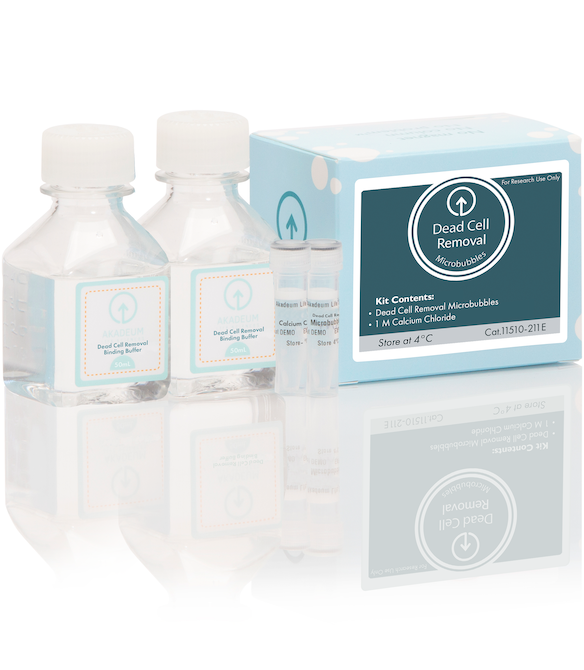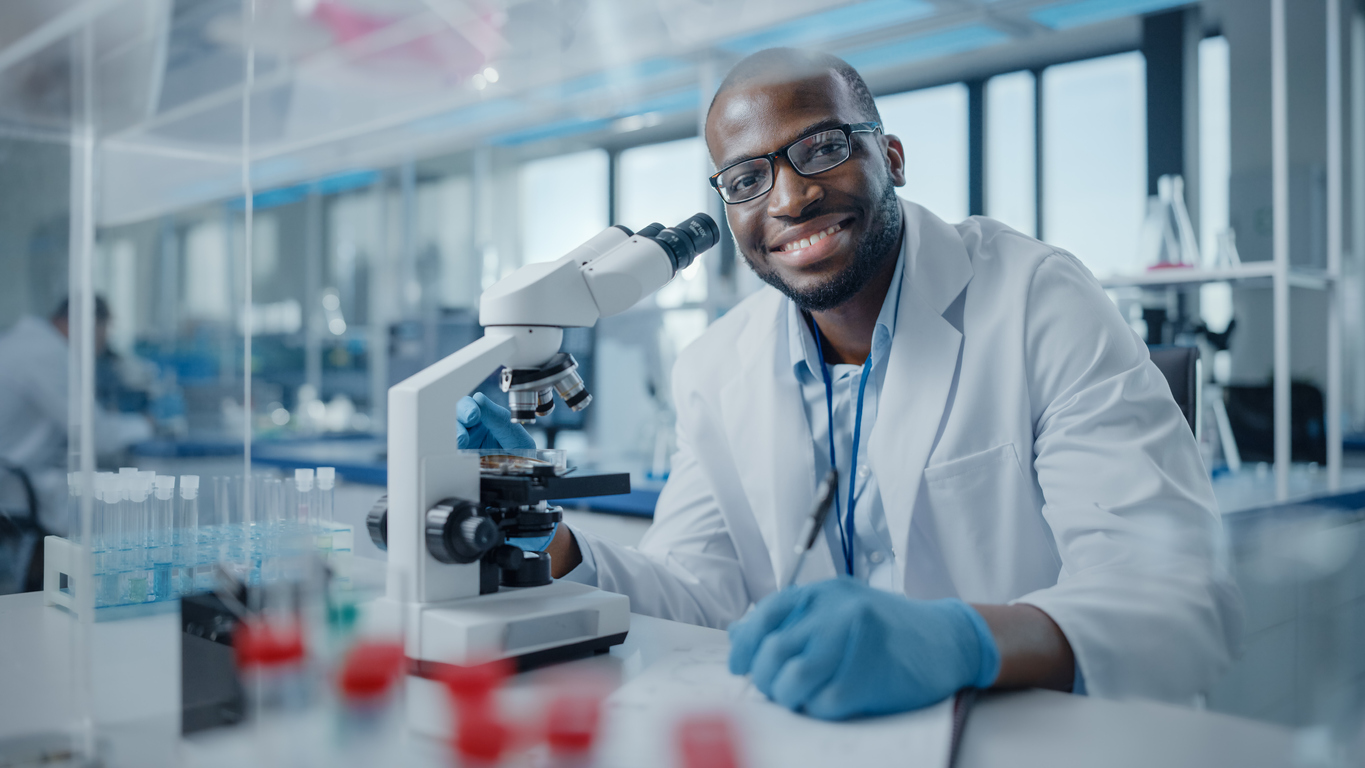Dead Cell Removal Before Cell Separation
Updated on May 19, 2025 Share
The removal of dead cells from a cell sample is a critical component of cell separation and purification that can significantly improve the quality and purity of the final product. As techniques for cell separation continue to evolve, researchers are constantly seeking ways to improve efficiency.
If left unremoved, dead cells tend to release cellular debris, which may lead to erroneous results and contamination of the final product. That’s why it’s so important to remove dead cells and cell debris from the cell sample before proceeding with the downstream application.
There are many methods commonly used for the removal of dead cells and cell debris, including buoyancy activated cell sorting (BACS™), centrifugation, fluorescence activated cell sorting (FACS), and magnetics-based methods.

Akadeum’s Dead Cell Removal Microbubbles Clean Cell Samples
Akadeum’s next-generation buoyancy activated cell sorting (BACS™) microbubbles technology offers a revolutionary approach to remove dead cells from the sample. BACS™ is a delicate, easily adaptable, and quick method that delivers efficient enrichment of live cells of interest for improved scientific outcomes.
Akadeum’s Dead Cell Removal Microbubble Kit provides a powerful approach for dead- and damaged-cell removal through the interaction of Annexin V-conjugated microbubbles with the phosphatidylserine (PS) molecules specifically exposed to the surface of dead and dying cells. As the Annexin V-conjugated microbubbles mix in the cell sample, the dead cells are bound by these microbubbles, floating on the surface of samples while the healthy and completely untouched cells remain on the bottom of the tube for downstream applications.
Benefits of Dead Cell Removal Before Separation
Separation of nonviable cells from viable cells is a critical step in many biotechnology and biomanufacturing applications, such as rare cell enrichment for cancer research. When dead cells aren’t removed, they start releasing cellular debris which may deteriorate the sample quality.
Additionally, dead or ruptured cells can lead to nonspecific binding with other components, which may lead to unreliable results. So it is of paramount importance to enrich the sample quality by segregating the dead cells from the live ones using a suitable and efficient method like BACS™.
Accurate Cell Counting
Cell counting and cell viability measurement are key considerations for many research applications in the biological sciences. Many cell counters commonly used for these applications identify individual cells with a greater degree of accuracy.
However, the accuracy of cell counting drops rapidly in a compromised sample with clumped or sticky cell populations. Cell clumping often results from extracellular DNA released by dead cells and other cell debris. It is therefore essential to implement a robust method like the microbubble-based BACS™ approach for dead cell removal for improved input cell quality prior to cell counting applications.
Supplementing Alternate Cell Separation Methods
BACS™ microbubbles for dead cell removal can be used as a supplementary method in conjunction with other methods—such as centrifugation or flow cytometry-based techniques—to reach the sample’s maximum yield. Centrifugation-based cell separation is sometimes used first on large sample quantities to initially remove the dead cell population and then followed by more gentle and specific methods, such as BACS™, for further purification.
Additionally, BACS™ can be employed in conjunction with flow cytometry-based separation of unwanted cells to improve the sample’s purity and viability, leading to better downstream results. Use microbubble technology to clean up and purify cell samples using our dead cell removal kit, for fast and efficient dead cell removal that maintains initial cell viability. Removing dead cells is crucial as dead cell debris can cloud results in downstream assays and skew analysis.
Learn More About Akadeum’s Microbubble Technology for Cell Separation

Employing negative selection via the selective binding of microbubbles with phosphatidylserine (PS) expressed on dead cells, our microbubble technology offers high sensitivity and selectivity, along with enhanced scalability and recovery. To learn more about Akadeum’s BCAS™ technology and the custom application of the DCR kit for your specific needs, reach out to us today



